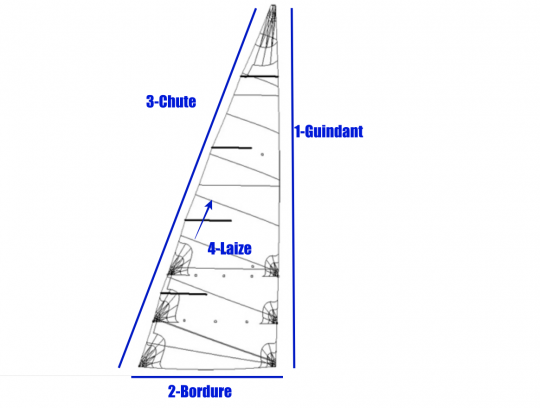The hollow of the sail
If a sail were perfectly flat, it would not be propulsive. To create an effective supporting plane, it must be given a curve, volume. This is called the hollow of the sail.
The operation is similar to an aircraft wing: by lowering the rear flaps, the pilot changes the volume of the wing profile for the aircraft's take-off. We can also modify the shape and volume of our sails to optimize our navigation.
Anatomy of a mainsail

Where does the hollow of voile? come from?
The master sailmakers who design and manufacture the sails have three "tools" to give a hollow to the sail:
- The hoisting of a mainsail is not quite straight. Sailboats provide luff tape that generates volume in the sail.
- The master sailboats operate in the same way to the border with a round edge giving volume
- Sail assemblies are made by integrating "special" elements pliers "between the widths that also give a hollow to the sail



Why change the bottom of the voile??
The trough of the sail will determine its power and drag. When the wind strengthens, the sail deforms because it is only fabric. The trough then moves away from the mast, not allowing the boat to sail upwind and causes it to freeze.
Adapt the hollow of the sail to the wind
- With a light wind, we'll dig the mainsail. By creating more power, we can get our sailboat off the ground.
- In medium winds, we will first try to reduce the drag to accelerate. Just as the aircraft will stop turning its take-off flaps to reduce drag and increase its cruising speed, we must reduce the trough of the sails as we accelerate.
- In strong winds, we will reduce the power of the sail by flattening it as much as we can to limit the gite











